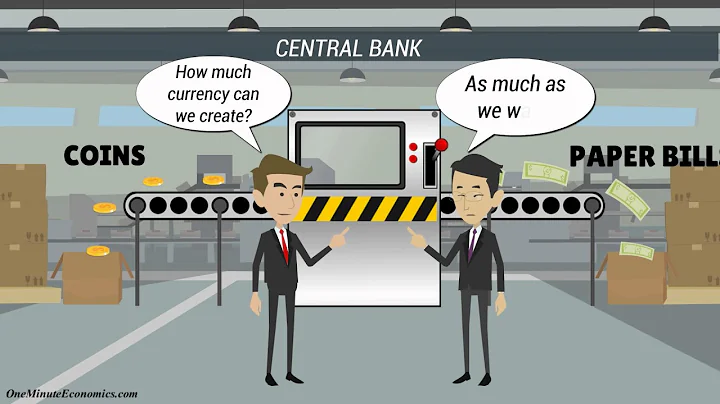What are the two major types of banking institutions explain the differences between them?
Commercial banks are the traditional "department stores" of the financial services world. Thrift institutions and credit unions are more like specialty shops that, over time, have expanded their lines of business to better compete for market share.
Under the umbrella of banking and finance, the industry has commercial banks—which are consumer facing like Bank of America—as well as central banks—the government entities that regulate the industry and manage monetary policy.
The major categories of financial institutions are central banks, retail and commercial banks, credit unions, savings and loan associations, investment banks and companies, brokerage firms, insurance companies, and mortgage companies.
The main difference between the two is that banks are typically for-profit institutions while credit unions are not-for-profit and distribute their profits among their members. Credit unions also tend to serve a specific region or community.
- Accepting of deposits.
- Granting of loans and advances.
There are three major types of depository institutions in the United States. They are commercial banks, thrifts (which include savings and loan associations and savings banks) and credit unions.
Banks are for-profit, meaning they are either privately owned or publicly traded, while credit unions are nonprofit institutions. This for-profit vs. not-for-profit divide is the reason for the difference between the products and services each type of institution offers.
Banks are financial institutions that are licensed to provide loan products and receive deposits; non-banking institutions cannot do this. Financial services include insurance, the facilitation of payments, wealth management, and retirement planning.
Retail banks have multiple locations and a variety of banking services. Credit unions, however, have fewer fees and higher interest rates on your money, but often require membership. With online banks, everything happens digitally (deposits, transfers, bill payments, and savings).
Banks hold money for clients and make loans to those clients. Other financial institutions provide a host of services such as insurance, trading, and mutual funds. The main difference between a commercial bank and other financial institutions is that commercial banks can take deposits from their customers.
What are three main differences between commercial banks and credit unions?
Credit unions tend to have lower interest rates for loans and lower fees. Banks often have more branches and ATMs nationwide. Many credit unions have shared branches and surcharge-free ATMs provided through the CO-OP Shared Branch network. Banks have historically had better technology online and for mobile apps.
- Checking accounts.
- Savings accounts.
- Money market accounts.
- Certificate of deposit accounts.

On the scheduled pay day, the employee has immediate access to their full wages ( one transaction without fee per payroll period).
Central banks carry out a nation's monetary policy and control its money supply, often mandated with maintaining low inflation and steady GDP growth. On a macro basis, central banks influence interest rates and participate in open market operations to control the cost of borrowing and lending throughout an economy.
- Give a Cash Gift. If your loved one is having a short-term cash flow problem, you may want to give an outright financial gift. ...
- Make a Personal Loan. ...
- Co-Sign a Loan. ...
- Create a Bill-Paying Plan. ...
- Provide Employment. ...
- Give Non-Cash Assistance. ...
- Prepay Bills. ...
- Help Find Local Resources.
The main difference between the two is that a central bank is responsible for overall monetary and financial stability, whereas commercial banks focus on providing financial services to customers and making a profit.
- Retail Banks. Retail banks, also known as commercial banks, are the most common type of banks. ...
- Credit Unions. Credit unions are not-for-profit financial cooperatives owned and operated by their members. ...
- Online Banks. ...
- Investment Banks. ...
- Savings and Loan Associations.
The bank will contact you and ask you to verify some purchases. After the bank realizes it's theft and forgery, they release everything they have to local law enforcement. The bank doesn't worry about this since they are insured.
Colonial, extraterritorial and federal central banks.
Banks are for-profit, and either privately owned or publicly traded, while credit unions are nonprofit institutions. This for-profit vs. not-for-profit divide is the main for the difference between the products and services each type of institution offers.
What is the main difference between retail banking and wholesale banking?
Retail banking focuses on individual customers and small businesses. Wholesale banking handles large-scale financial transactions, while retail banking handles small to medium-sized transactions including everyday banking activities.
Commercial banking is another name for corporate banking, which offers banking services to businesses, governments, and other institutions. While retail banking offers its services to people for personal use, commercial banking serves institutions.
Who most often wins in a credit transaction? Generally, both the lender and borrower benefit in credit transactions. How does risk influence the rate of interest? Higher risk creditors are charged higher interests rates.
The main difference between other financial institutions and banks is that other financial institutions cannot accept deposits into savings and demand deposit accounts, while the same is the core business for banks.
The key difference between retail and commercial banking is who the products are designed for. While retail banks service individuals, communities, small businesses, and families, commercial banks focus on larger companies, government entities, and institutions.